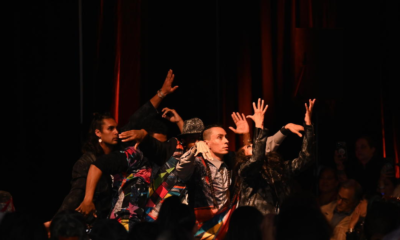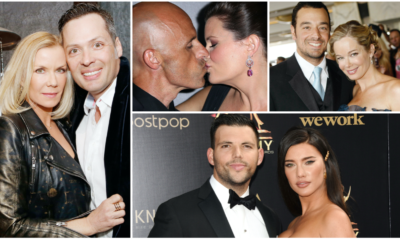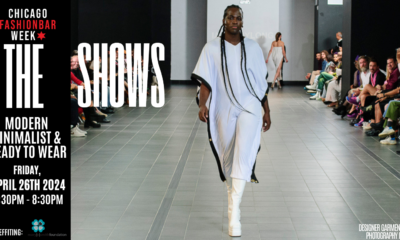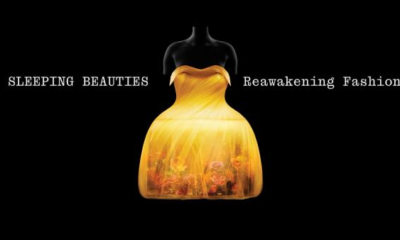Entertainment
‘Brazen propaganda’: pro-Modi films flood Bollywood before India election – The Guardian
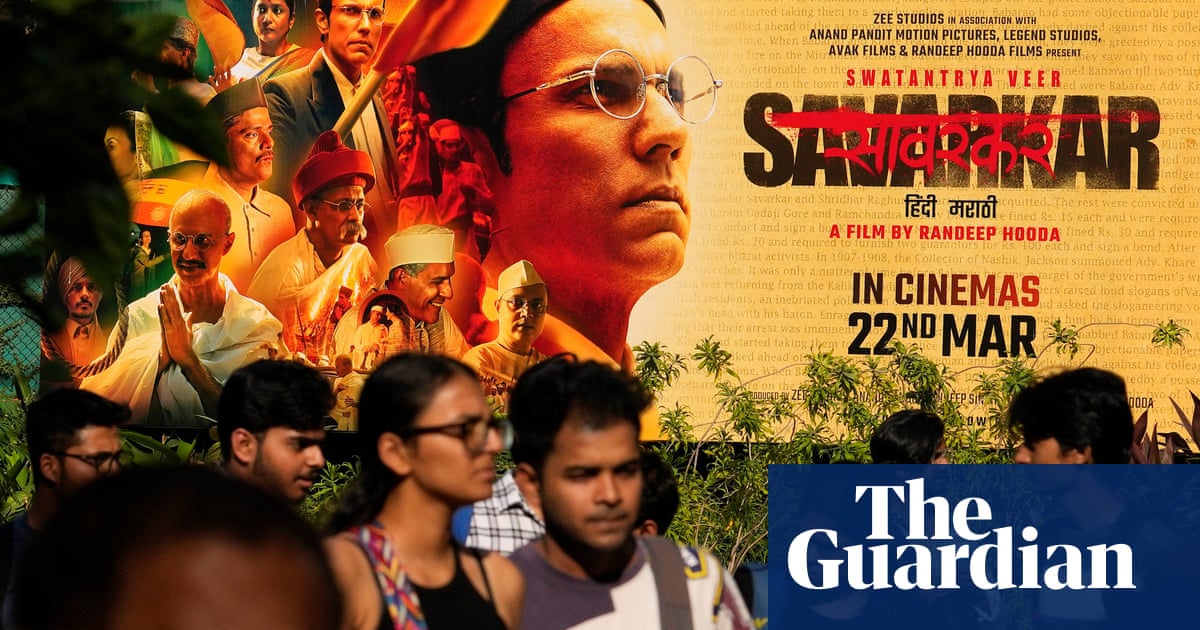
Some releases promote the PM and his policies while others are accused of being divisive and Islamophobic
They are films that claim to tell the “real story” of India’s history, taking aim at the evils of “leftists” and “intellectuals” and even the freedom fighter Mahatma Gandhi.
As Narendra Modi and his Bharatiya Janata party (BJP) seek a third term in next month’s election, a feverish pro-government momentum has gripped Bollywood, blurring the lines between entertainment and political campaigning in India’s largest film industry.
Almost a dozen new films promoting the prime minister and his government’s Hindu nationalist policies and ideology have been released or will come out at cinemas in coming days and weeks. The election, which will determine the direction of the country for the next five years, begins on 19 April and will run for six weeks.
Film critics and analysts have accused several titles of pushing Islamophobic narratives and debunked anti-Muslim conspiracies, and targeting “urban naxals” – a derogatory term some Hindu rightwingers use to describe leftwing activists and intellectuals. Some in the industry have raised concerns that these films will be used to further divide India along religious lines.
One film produced by a BJP MP is so incendiary in its portrayal of Muslims that it has faced court action to try to prevent its release.
The flurry of pro-government films is reminiscent of the build-up to the 2019 election, when a biopic of Modi was deemed to be so positive about the prime minister that the election commission halted its release before the polls.
Sayandeb Chowdhury, a professor of literature at Chennai’s Krea University who has written on Indian cinema, described the films as “brazen propaganda which are deliberately creating wounds and fault lines to serve the government’s political agenda”.
He pointed out that Modi and other government officials had directly referenced many of the films in their speeches. “Cinema has become a form of political mobilisation,” he said.
One of the prominent titles about to hit Indian cinemas is a biopic of Vinayak Damodar Savarkar, a divisive Hindu nationalist leader and activist Modi has lauded and who fought against British rule. His writings, however, promote violence against Muslims and express sympathy for the Nazis and Italian fascists.
Article 370, released last month, is an unabashed celebration of Modi’s decision to strip Kashmir, the majority-Muslim region, of its statehood, portraying him as a decisive figure saving India from violence and corruption. Modi praised the film while critics called it “factually incorrect”.
Another film takes aim at Jawaharlal Nehru University, an institution known as a hub of leftwing thought and activism. The film, Jahangir National University, which comes out in April, tells the story of a campus where “leftists waging love jihad” – a debunked conspiracy against Muslims – and “urban naxals are trying to divide the country”.
Chowdhury said the releases spoke to a larger trend in Bollywood in which the film industry had been aggressively co-opted over the decade of Modi’s rule, , despite historically remaining apolitical.
He lamented that Bollywood, which had long united people across India’s vast religious and cultural differences, was being weaponised to sow discord, to great effect. “If cinema itself becomes a tool of division, one of India’s more cherished unifying symbols is in danger of being lost forever,” he said.
While films propagating the BJP’s narrative are being released with increasing regularity, streaming platforms such as Netflix and Amazon have faced legal threats and had series and films removed for being seen to be critical of the government.
Chowdhury said the turning point had been the 2022 release of The Kashmir Files, which claimed it would tell the real story of the expulsion of Hindus from the region. Despite its negative portrayal of Muslims and accusations that it was a polarising distortion of history, it was the biggest blockbuster hit of the year.
It has prompted a number of similar films claiming to portray history, largely involving the demonisation of Muslims, which have been seen as part of a wider BJP project to rewrite the narrative of India’s past.
The most recent release is Razakar: Silent Genocide of Hyderabad, which was accused in a court filing of being Islamophobic for its distorted portrayal of a Muslim leader. Similar to the Kashmir Files, the producer has claimed the film is “100% accurate” with no commercial embellishments.
Raja Sen, a film critic and Bollywood screenwriter, told the Associated Press that many filmmakers were jumping on the bandwagon, realising the potential for major box office success of polarising films that generate public discussion.
“The scary part is that these films are being accepted now,” Sen said. “It is truly frightening.”
Entertainment
Indigenous fashion takes the runway with an eye to history — and the future – CBS News
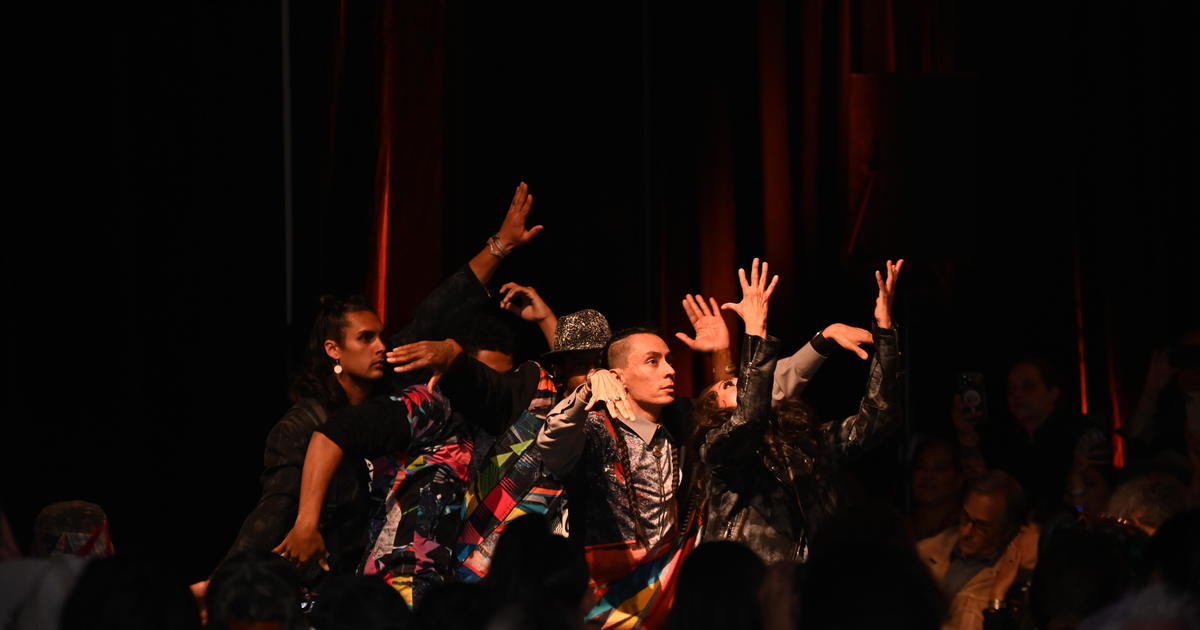
Watch CBS News
By
/ CBS News
Comanche chanting kicked off the Southwestern Association for Indian Art’s inaugural runway show, as singer Marla Nauni opened with a blessing song for Native people. Peshawn Bread, the designer behind House of Sutai, quickly followed the prayer by sending a model in bell bottoms and roller skates down the runway to set the tone for her colorful disco-influenced collection.
It was the start of Native Fashion Week in Santa Fe, where dancers draped in reimagined indigenous looks twirled alongside models in nontraditional silks with Native motifs. They showed off creations that juxtaposed modernity and traditional Native ceremony.
Peshawn says she used elements of the 70s to represent a difficult time for indigenous people – when the American Indian Religious Freedom Act passed in 1978. The act protects Native American religious practices and customs, which had been illegal under previous laws.
“We were fighting for our practices and spirituality and didn’t have time to go to the disco. Like you hardly saw any Natives in discos,” said Bread. “… So, I wanted to say, well, in the 70s what if we had pure Indigenous joy? What would it look like? Would we incorporate our materials or designs like weaving patterns in our fabric?”
One of the largest gatherings of Native American fashion, more than 17 of the hottest Indigenous designers from across dozens of tribes in North America came together starting last weekend to celebrate their achievements outside of major fashion houses.
Amid pro-Palestinian demonstrations on college campuses and in front of the Met Gala, Navajo nation designer Carrie Wood pointedly addressed disparity in indigenous culture in America as well as expressed solidarity with the pro-Palestinian protesters in her collection. Wood sees the conflict Palestinians are facing as akin to the struggles of Native Americans. Her final piece to hit the runway and close out the first day of Native Fashion Week combined elements of Palestinian traditional garments juxtaposed against Native American dress. The model wore a Navajo-style tiered skirt made out of the Palestinian keffiyeh. Wood connected the similar use of accessories such as scarves and jewelry in both cultures to unify the style.
Many designers noted the difficult history, expressing fears that Native peoples are seen as a monolith, relegated to history — a lack of nuance that drives many Native artists to be protective of their work.
Amber-Dawn Bear Rope, who is part of the Siksika nation in Alberta, Canada, and the director of the Southwestern Association for Indian Arts, which put on the four-day event, started the organization on a shoestring budget in 2014. She hopes the show is the launching pad for many within the indigenous community to create their own unique brand after generations of being forced to fit a cultural mold.
“This is creating our own space for us to meet and have an experience within our own worldview of fashion and indigenous design,” she said. “Native American artists were the original courtiers of fashion in North America.”
Events like the fashion week, she said, are a way for Native American creatives to take back the narrative on what it means to be indigenous.
Kayla Lookinghorse-Smith, an up-and-coming Lakota-Dakota Sioux designer, hopes to bridge the gap between history and modern design, “[my work] doesn’t take away from our protective ceremonial garment or our stories. It speaks to two worlds. We have to walk in today’s society, and we have to remember who we are,” Lookinghorse-Smith said.
Mainstream interest in Indigenous dress and culture in the wake of the award-winning film “Killers of the Flower Moon,” based on the bestselling book of the same name, TV series “Reservation Dogs” and other Native-focused entertainment is driving designers and attention to their work.
Celebrities such as Lily Gladstone and Quannah Chasinghorse are drawing attention to indigenous pieces on the red carpet and award ceremonies. At this year’s Met Gala, Chasinghorse wore jewelry from beadwork artist Heather Dickson to pair with her custom H&M dress. Meanwhile, Gladstone’s Met Gala gown incorporated embroidered star-shaped jewelry from renowned Great Plains artist Keri Ataumbi.
Bread’s mother, Jhane Myers, a producer and Native consultant on Hollywood productions including 2022’s “Prey” and Showtime’s “The Curse,” sees the renewed attention on Native culture as a cyclical trend. She said she’s seen support build every 25 years, but it dissipates before Natives reach true success. Myers, who has also collaborated with major fashion labels such as Ralph Lauren as part of her work with the Indigenous fashion community, believes that this moment will be different — because Indigenous creatives are working within Hollywood as directors, writers and producers, so the wider narrative can be influenced by those who understand it.
Comanche and Cherokee designer Bread hopes with Hollywood interest and events like SWAIA’s Native Fashion Week, Indigenous dress and designers can catch the eyes of larger fashion houses and brands.
Already, her close friend, Diné weaver Naomi Glasses, has gone from a fellowship with former Chloe creative director Gabriela Hearst as part of Creative Futures, which provides opportunities for creatives, to now working on a major collaboration with Ralph Lauren. Bread said that these opportunities allow Native designers and brands to work together ethically instead of facing potential struggles with appropriation.
Designer Heather Bouchier from Beardyʼs & Okemasis’ Cree Nation in Saskatchewan Treaty Six Territory in Canada says that Native celebrities have given her the chance to walk her dresses down red carpets. One of her dresses, fitted for a high-profile Native American actor at the Canadian Screen Awards, will feature pieces made out of 3D printed dentalium shells, an Inuit or First Nations tusk-like jewelry often used in commerce. She says because the material is rare, she takes a sustainable approach to design by 3D-printing the shells.
Actor Wes Studi, who has received an Academy Honorary Award for his roles in acclaimed films such as “Dances with Wolves” and “Last of the Mohicans,” attended the SWAIA fashion show to watch his granddaughter’s debut appearance as a runway model. Over the past several decades, acting roles for Native Americans have been inconsistent. But watching his granddaughter blossom in her modeling career is a moment of generational impact.
First published on May 11, 2024 / 9:34 AM EDT
© 2024 CBS Interactive Inc. All Rights Reserved.
Copyright ©2024 CBS Interactive Inc. All rights reserved.
Entertainment
Prada Theories, WME Fashion Whispers & Net-a-Porter Murmurs – Puck

Already a member? Log In
Hi, and welcome back to Line Sheet. I’m in the home stretch of this New York trip. I’ll be back soon, I’m sure. I can’t believe the cost of cabs these days.
Last night, I canceled three meetings uptown to squeeze in an extra hour of work (I know, it doesn’t compute), tried to get a manicure at Jin Soon (booked solid, bless them), then headed over to Genesis House for a dinner hosted by Alina Cho in honor of Cate Holstein, who was wearing a beautiful striped blouse of her own design. Vanessa Traina, Lauren Santo Domingo, and Khaite C.E.O. Brigitte Kleine were all there, too, looking fabulous. The food was very good, and Cate and I discussed the greatness of Rebecca Ramsey, and Nicole Phelps and I somehow managed to get into it about The Idea of You with Cate’s husband (and store architect) Griffin Frazen. (I hope he doesn’t mind me revealing that he liked it!) It was a perfect post-Met dinner with the most New York fashion brand.
🚨🚨 Programming note: Tomorrow on Fashion People, I talk with High Sport founder Alissa Zachary—who actually used to work at Khaite—about why everyone is so obsessed with her and her stretchy pants. Subscribe here.
Also: If you’re reading this huddled over your boss’s computer because you’re worried I’ll be able to tell that she’s been forwarding my work to you… you should be worried. I am coming for you! Why not organize a group subscription instead of behaving so reprehensibly? Email [email protected] for more details. Or just sign up here.
Mentioned in this issue: Susan Plagemann, IMG Models, Lorenzo Bertelli, Prada, Armani, Bella Hadid, Ivan Bart, How Long Gone, Victoria’s Secret, Carolyn Murphy, Shalom Harlow, Amber Valletta, WME Fashion, NYFW, Net-a-Porter, Walmart.com, Kering, LVMH, the Wertheimers, Chanel, and many more…
Anyway, absolutely no one should be surprised by the younger Bertelli’s remark. Remember, Prada is preparing for its debut on the Milan Stock Exchange, and it’ll need to continue to figure out ways to increase shareholder value that don’t require an 89 percent jump in sales at Miu Miu every quarter.
Don’t forget, though, that 25 years ago, Prada did try to build a group to rival a then-nascent LVMH and Kering—picking up Jil Sander, Helmut Lang, and Church’s. It kept the English brogue-maker but sold off Jil Sander and Helmut Lang within a few years. (There’s a great 2005 piece by Eric Wilson, my all-time favorite Styles writer, about what happened. In short: It wasn’t easy for Patrizio Bertelli to deal with creatives like Lang and Sander.) Building a group now, given the market dominance of LVMH, is obviously even more challenging. But perhaps the Bertellis see an opening for a pure-play fashion group as LVMH moves further into the lifestyle business and Kering shakes off its demons.
As for whether Armani would be a good first move: They like to call a brand like that a “sleeping giant”—i.e., the bones are there for it to be far bigger than it is. However, it’s a clothing business, not an accessories one, and it’ll take a lot of work to adjust those priorities. I’d be more interested in seeing a Kering-Prada Group merger—it would give everyone involved a real fighting chance. As for that pesky rumor about the Wertheimers being interested in acquiring Prada? I still think it’s a good idea. Actually, Kering-Prada-Chanel altogether is the best idea.
But fashion being fashion, the take-private was the latest in a growing litany of grievances, both real and imagined, swirling around WME Fashion. The fashion group, after all, was already undergoing a significant and long-overdue restructuring, starting with the hiring of former Condé Nast executive Susan D. Plagemann as president. Since her arrival, in 2022, Plagemann had shuffled staff, reorganized divisions, and eliminated others, all in the name of focus. Alas, fashion people don’t like change, and there have been audible rumblings. But as the fashion world corporatizes—migrating from a madcap collection of family-run firms to modern C.P.G. conglomerates—the agencies needed to do the same. (Disclosure: WME represents Puck. I’m represented by UTA for book-related stuff.)
The heart of the matter, according to the aggrieved, was that Bart was the glue that held IMG together. Many of the models who left were Bart’s loyal clients, so in many cases there probably wasn’t much IMG could do to keep them. And there’s no doubt that WME higher-ups expected to lose clients when Bart stepped down. A representative shared the following statement with me from WME co-chair Christian Muirhead: “We are invested in the future of our fashion portfolio and will continue to make necessary changes that anticipate the evolving landscape to best meet the needs of the clients and partners we serve.”
Plagemann has made branding WME Fashion a major component of her role, even running an advertising campaign featuring the company’s talent roster during New York Fashion Week. Jeni Rose, a longtime Bart deputy, and The Wall Group’s Kate Stirling and Ali Bird, were elevated to manage the stylist and modeling businesses under Plagemann, which they have done profitably. A few months later, Plagemann hired her own girl, Sally Singer, to run Art + Commerce, with the idea that the former Vogue creative’s deep industry connections would be enough to keep that network of photographers and art directors happy.
Plagemann’s directive was likely to standardize these niche businesses to better mirror WME, the talent agency and the main revenue generator in Endeavor’s $1.5 billion representation portfolio. It wasn’t always going to be an easy fit, however. Talent representation is pretty straightforward: You book a talent on a job, and earn a 10 percent commission. Modeling agencies are muddier: Agent-manager hybrids can earn anywhere from 5 to 30 percent. Models also tend to start when they are very young, and so people like Bart serve as parental figures, adding to the complexity of the relationship.
Recently, she sent an email to the division sharing a Bloomberg article about Kering’s financial slump, asking the team to share ideas on how WME could help support the French luxury group. “An important read for everyone given our relationship to not only Kering and LVMH, but all beauty, fashion, and luxury,” she wrote. “Earnings are being posted so this is a time to lean in and think about how we can all be solutions-oriented to these companies. It’s clear they need ideas.”
For years, agencies have tried to contort themselves as brand advisors, using their elan and expertise to extract retainer fees. Plagemann is really only doing what other executives across the business do. But these sorts of directives have nevertheless rubbed some critics and lifers the wrong way. “She doesn’t understand that the employees of WME Fashion are not consultants, but rather managers and agents that should be more focused on booking their talent than thinking of strategies for other organizations,” one person said. “She’s trying to turn the division into a Condé Nast publishing company, which is far from what made all the divisions of WME Fashion successful.”
Meanwhile, IMG Models has been reconfigured to look nothing like a traditional modeling agency, even discarding the traditional concept of modeling boards, wherein agencies typically have a main board for top talent, a development board for up-and-comers, etcetera. Today, IMG employees are instead divided into “pods of excellency,” grouping teams by their role rather than the types of talent they represent. Some industry observers have asked if WME should simply absorb the IMG Models roster into its own since there are few models left who generate enough money to justify the work that goes into a 10 percent commission.
Naturally, as Plagemann reorganizes WME Fashion into a more modern structure, plenty of people have wondered if all its shingles should be absorbed into WME. For now, though, management seems to have decided that the names are important enough to keep, and the services are distinctive enough to require unique branding. In the past few years, Hollywood has finally realized how lucrative fashion can be, in part because its core business is dwindling. But there are few people working in Hollywood who understand the nuances of fashion. And Plagemann, who spent most of her career selling the easiest media brand to sell—Vogue—happens to be one of them.
Tapestry says that the F.T.C. lawsuit against the merger with Capri “makes no sense.” [WWD]
Zalando is reportedly putting money in to help get the Saks-Neimans deal completed. [WWD]
Apple as we know it is over. [The New Consumer]
She looks good. [Twitter]
Interesting that Richemont bought Vhernier, because there were some false Italian reports last summer linking the jeweler to Kering. [WWD]
Amanda and Juliet are the last word on Met Gala fashion. (No, really, let’s stop talking about it now.) [Jam Session]
One last thing, actually. Tory Burch did the Met theme justice in a Sarah Burton-designed Alexander McQueen dress, from her own closet, at the gala. Also, listen to her on Pete Nordstrom’s podcast. [Nordy Pod]
Until Monday,
Lauren
Need help? Review our FAQs
page or contact
us for assistance. For brand partnerships, email [email protected].
You received this email because you signed up to receive emails from Puck, or as part of your Puck account associated with . To stop receiving this newsletter and/or manage all your email preferences, click here.
Puck is published by Heat Media LLC. 227 W 17th St New York, NY 10011.
SEE THE ARCHIVES
Sign up today to join the inside conversation at the nexus of Wall Street, Washington, Silicon Valley, Hollywood, and more.
Already a member? Log In
Exclusive to Inner Circle only
Enter your email for a free preview of Puck’s full offering, including exclusive articles, private emails from authors, and more.
Verify your email and sign in by clicking the link we just sent.
Already a member? Log In
Start 14 Day Free Trial for Unlimited Access Instead →
You have 1 free article Left
To read this full story and more, start your 14 day free trial today →
Already a member? Log In
All of the insider knowledge from our top tier authors, in your inbox.
Already a member? Log In
You should receive a link to log in at .
I DID NOT RECEIVE A LINK
Not a member yet? Sign up today
You should receive a link to log in at .
I DID NOT RECEIVE A LINK
Use a different sign in option instead
Member Exclusive
You are logged into a free account as [email protected]
Already a member? Log in with your paid account
A new economic model in which writers are also partners in the business.
Customize your settings to receive the newsletters you want from the authors you follow.
Connect directly with Puck talent through email and exclusive events.
You are logged into a free account as [email protected]
ENJOY 1 FREE ARTICLE EACH MONTH
Subscribe today to join the inside conversation at the nexus of Wall Street, Washington, Silicon Valley, Hollywood, and more.
Entertainment
In pics: 2024 Hyundai Santa Fe is bold and boxy – HT Auto

Copyright © HT Media Limited
All rights reserved.
Copyright © 2023 HT Auto
-

 General Knowledge2 years ago
General Knowledge2 years agoList of Indian States and Capital
-

 General Knowledge2 years ago
General Knowledge2 years agoList Of 400 Famous Books and Authors
-
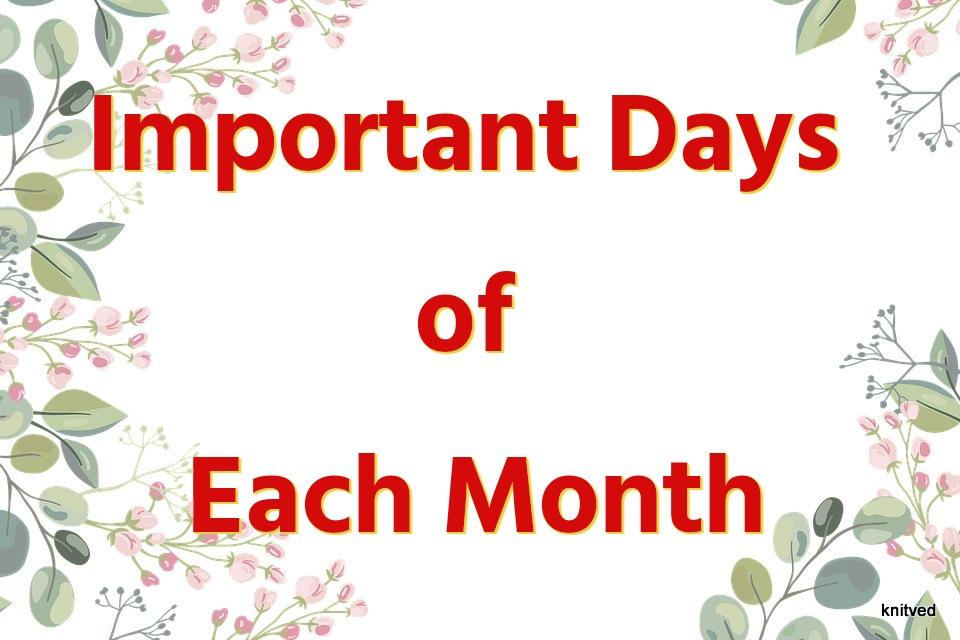
 Important Days4 years ago
Important Days4 years agoImportant Days of Each Month
-

 General Knowledge2 years ago
General Knowledge2 years agoCountries and their National Sports
-

 General Knowledge3 years ago
General Knowledge3 years agoCountry Capital and Currency
-

 Important Days3 years ago
Important Days3 years agoHoli
-

 General Knowledge2 years ago
General Knowledge2 years agoList of Indian President
-
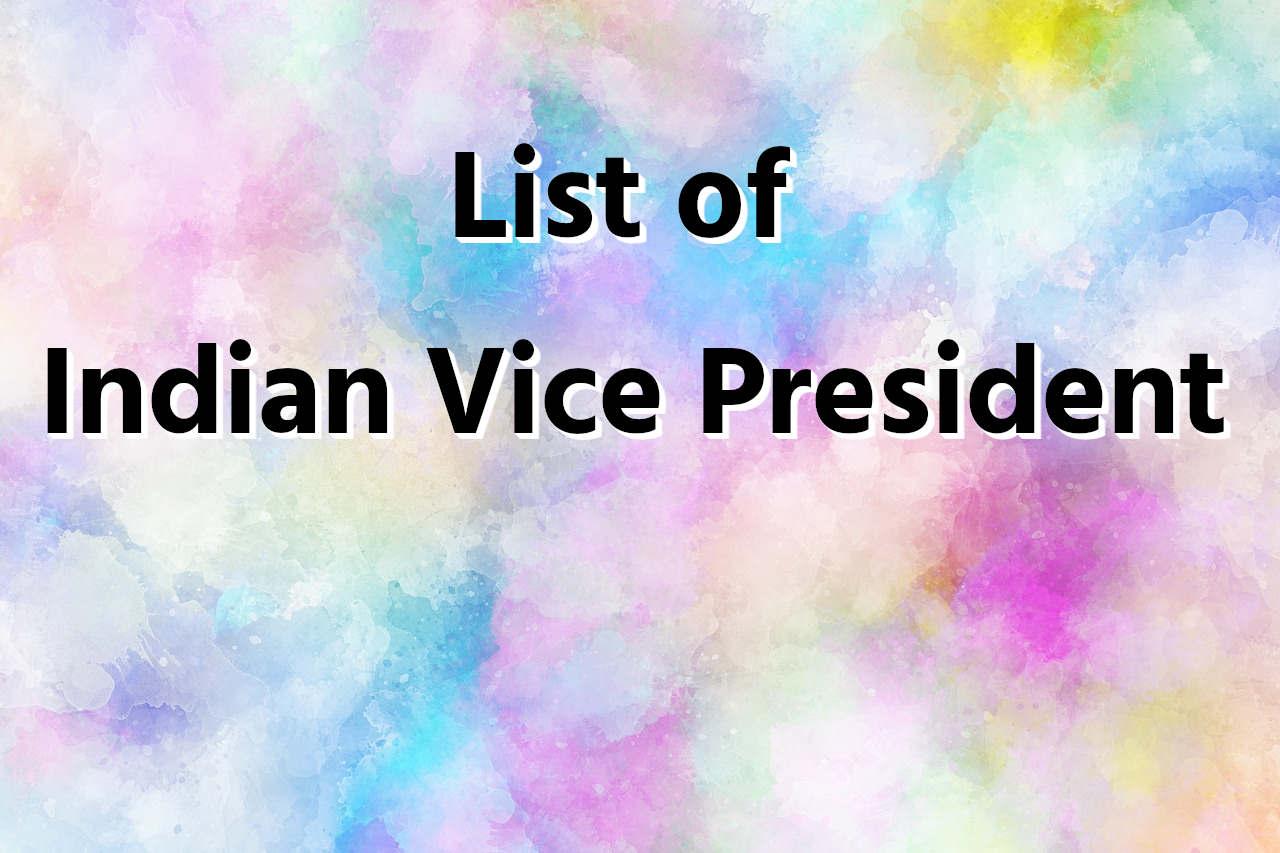
 General Knowledge2 years ago
General Knowledge2 years agoList of Indian Vice President


